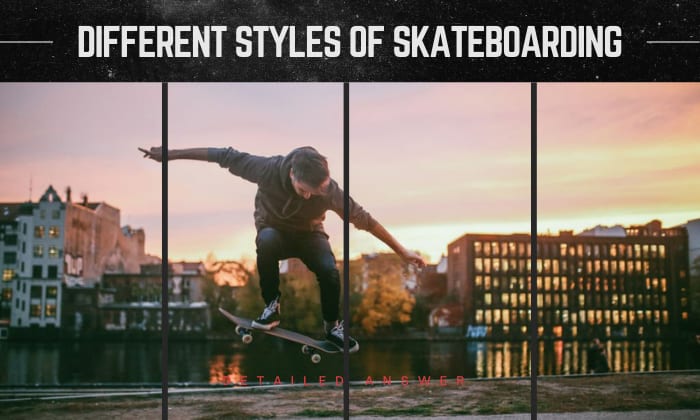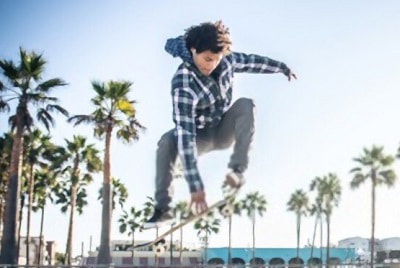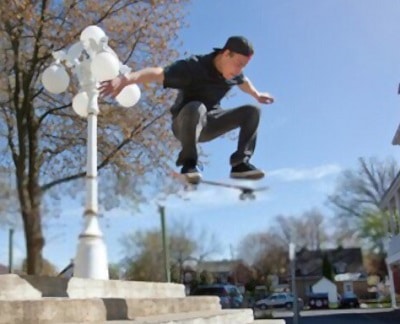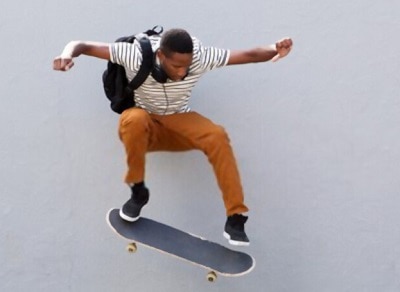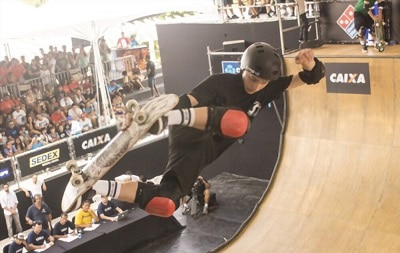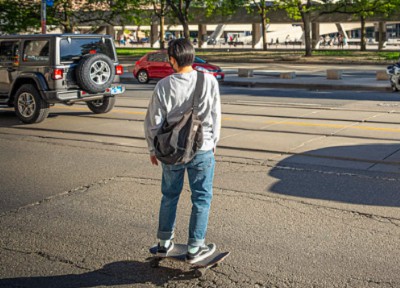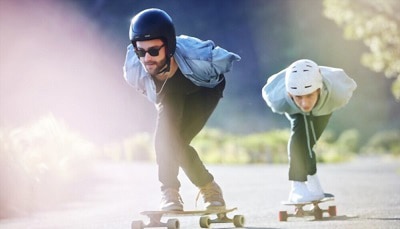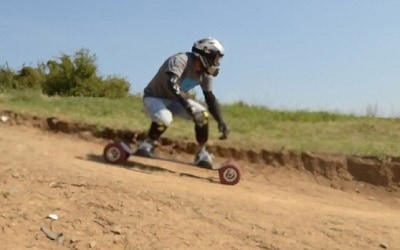Sports are like art. They have variations in movement and playing rules. Yes. This idea also applies to skateboarding. Different types of skaters get to decide and move based on the rules and execute remarkable moves on the floor.
And with skateboarding adapting to these sporting trends, let’s learn about the different styles of skateboarding.
This article will highlight what one group of skaters do differently from another. Also, we’ll help you assess what styles of skateboarding can work on you best.
Table of Contents
List of Skateboard Riding Styles
This section will show us the distinctions, origin, and other pertinent facts on skateboarding style.
1. Park skateboarding
Park skating is one of the two styles popularized recently in the Olympics.
This style began after the construction of the first skatepark in the world, located in Tucson, Arizona, in 1965.
Skateboarding in the park entails taking on pipes of all kinds, ramps, pyramids, bowls, stairs, ledges, rails, and more. What’s good about this style is it has a dedicated skating space. So, skaters won’t have to worry about neighborhood interruption or cars passing by.
2. Street
Street skateboarding is the second Olympic category next to the park.
Chronologically, the street skater style emerged as a way to get off conventional skateboarding in the parks in the late 80s. In this style, riders used public fixtures and urban areas. In a comparison between park vs street skating, park style has a more dedicated riding location.
These fixtures consist of ledges, handrails, benches, and curbs. Skaters treated these as obstacles where they would perform grinds, slides, flips, and other technical skating tricks.
3. Freestyle
Who would have thought that freestyle skateboarding would become famous for being a commuting-staple style in the early skateboarding days?
Back then, skaters would enjoy performing freestyle, where they did ollies and manuals. And all these skills happen on flat ground. Why? Because waves aren’t always on their best days.
Prospectively, the skills done in this style evolved as more complicated yet fun skating tricks.
4. Vert
Vert skateboarding is one of the few styles that embarked famous names in the hall of fame, like Tony Hawk.
This skating style originated from 70s surfers who rode from the horizontal part of a pool to its vertical sides and off the edges catching air.
Not long enough after its conception, the vert skating influence entered the skate parks in vert ramps and pipes. There, skaters had more space to practice and conquer their fears skating vertically.
5. Cruising
Were you saying relaxing skateboard rides? You might have thought of cruising on a skateboard.
Technically, cruising is a skating style we can do best on a longboard. And longboards first came into the scene in the 70s, courtesy of Tom Sims. It became a successful hype as Ed Economy and Brad Stradlund led the board’s growth.
When cruising on a longboard, no tricks happen. Skaters would ride for a long time without doing any stunts, not even stopping. And since it’s a longboard used in this style, skaters feel more stable and comfortable when cruising.
6. Downhill
Downhill skating has the same roots as cruising because both types of skateboarding work best on a longboard.
This skating style deals most with speed. Some say it’s dangerous, but sufficient knowledge of all technicalities, strategies on the road, and positioning will help lighten things.
One aspect we should master in downhill skating is aerodynamics. This way, we can understand the downhill situation and control the board more efficiently.
7. Off-road
Perhaps, off-road skating is an underrated style among today’s skateboarders.
Off-road skateboarding could be as challenging as some of the styles discussed. But this style doesn’t need insanely tall ramps or long ledges.
Instead, off-road skateboarding sees riders taking on dirt, sand, gravel, and similar surfaces. But not all types of skateboard wheels could not withstand these places for too long.
Indeed. And that is why we have off-road skateboard wheels prescribed for doing this style.
Things to Determine a Skater’s Style
We have committed to assisting you in picking your perfect skateboarding style. Consider these tips.
- Preferred skating location – Before buying a skateboard, we should know where we’d like to skate or check the most convenient spots to ride our boards, whether parks, streets, or more.
- Tricks performed – On the way to choosing a skating style, we go through a set of tricks or skateboarding stances specialized for each type. Hence, try to get along with various skills or stunts until you find the ones you’re most confident and comfortable performing.
- Obstacle choices – It’s not only different skateboard styles we choose from. Sometimes, we also have preferences for skating obstacles. And of hundreds of these challenges designed for skaters, there must be at least a few you would love riding daily. So, you can go for vert ramps, bowls, ledges, rails, or without obstacles at all.
- Skating peers – Influence impacts a skater’s preferences significantly. Who you ride with can divert your focus to trying your peers’ styles. So, don’t be ashamed of getting along with other skaters until you find a skating group doing a style that suits you best.
Freestyle vs Street vs Transition Skateboarding
Some skaters confuse freestyle, street, and transition under a category or two. Let’s distinguish each of them.
- Street – Skaters perform stunts and tricks on obstacles found on the streets.
- Transition – Similar to vert skateboarding, where skaters play on vert ramps.
- Freestyle – No skateboarding obstacles used.
What Are Different Skateboard Pushing Styles?
Besides the seven types of skateboarding, we also have variations in simple skills like pushing. And what are these? Regular and Goofy.
Goofy means skaters push the skateboard forward with their left foot, leaving the right on the front part of the deck. On the other hand, the regular stance or pushing finds the left skater’s foot on the board and the right pushing against the ground.
Conclusion
Skateboarding is a unique sport. It doesn’t deal much with scores, and every skater has a piece of special equipment. And what’s better about it is it has various ways to enjoy.
Now that you know the different styles of skateboarding, the next thing to do is digest what each type entails. Then, take the shared tips to help you choose the most suitable skating style. Eventually, you’ll be on verts, pools, rails, streets, or cruising down the road. You can even develop this hobby into something that makes money via sponsorship from skateboarding equipment brands.
So, it’s time to have your location, skating style, obstacle, and peer preferences.

Hi, I am Charles Harris. I opened this site to write as much as I can about my biggest passion – skateboarding!
I started as a clumsy yet passionate rookie 10 years ago to now a still passionate yet much better skateboarder! But I have to tell you, the whole journey has always been fun and rewarding, indeed not without hardship.


